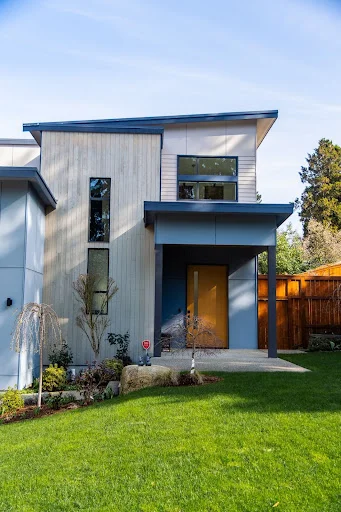If you live in Washington, you already know how rain plays a starring role for most of the year. With wet winters, misty mornings, and unexpected showers, choosing the right siding for your home isn’t just about looks — it’s about protection. The siding you choose must handle moisture, resist rot, and still look beautiful through it all.
Let’s explore the top siding options that can withstand Washington’s wet weather while giving your home lasting curb appeal.
There’s so much more to discover—browse our related posts!
1. Fiber Cement Siding: The All-Weather Workhorse
Fiber cement siding is one of the most moisture-resistant materials available today. It’s made from a blend of cement, sand, and cellulose fibers, creating a strong, water-resistant product that doesn’t warp, swell, or crack in rain-heavy environments like western Washington.
It’s also non-combustible and resists pests and mildew — all big bonuses in a damp climate.
Why it’s a great choice for rainy areas:
- Highly water-resistant
- Minimal maintenance
- Long lifespan (30–50 years)
If you’re looking for a siding material that offers weather protection and still mimics the look of natural wood, fiber cement siding installation is a solid investment.
2. James Hardie Siding: Built Specifically for Wet Climates
James Hardie is a brand of fiber cement, but it deserves its own spotlight — especially since the company developed a special HardieZone® system for different climates. For the Pacific Northwest, the HZ10® product line is designed to resist moisture, mold, and salt air — all common challenges in Washington’s coastal and rainy regions.
You also get the beautiful texture of wood without the moisture headaches that come with real wood siding.
James Hardie benefits for Washington homeowners:
- Engineered specifically for wet, rainy climates
- Outstanding paint adhesion (goodbye frequent repainting)
- Resistant to mold and rot
When you’re ready to upgrade, working with a 5-star siding installation company ensures your James Hardie siding is properly installed for maximum performance and longevity.
3. Metal Siding: Modern Looks with Maximum Durability
Metal siding is no longer just for barns and industrial buildings. Modern metal panels come in stylish finishes and profiles that work beautifully with contemporary home designs. Aluminum and steel both perform exceptionally well in wet climates.
Metal siding won’t rot, and it’s immune to insect damage. While it can dent on impact, it’s practically impervious to rain, snow, and wind.
Rainy-climate advantages:
- Rust-resistant coatings make it waterproof
- Virtually zero maintenance
- Long lifespan and recyclable
If your home leans modern or you want a bold, minimal look that lasts, metal siding is a smart, moisture-resistant choice.
4. Wood Siding: Classic Beauty with a Watchful Eye
Wood siding offers timeless charm, and many Washington homeowners still love its natural warmth and texture. However, wood requires regular maintenance to protect it from rot, swelling, and mold in the rainy Northwest.
Cedar is the best option here, as it has natural oils that resist moisture and decay. Just be prepared for regular sealing and painting or staining.
Tips for success with wood siding in Washington:
- Use high-quality cedar or redwood
- Apply a waterproof sealant every 2–3 years
- Keep siding clean and well-ventilated
Wood can work in Washington, but it demands commitment. For homeowners who love the look of real wood and are willing to maintain it, it can still be a great choice.
Final Thoughts: Best Balance of Looks, Durability, and Low Maintenance
If your main concern is weather resistance and low upkeep, fiber cement and James Hardie siding are your best bets. For a modern, metal aesthetic, aluminum or steel siding holds up extremely well. And if charm and texture top your list, natural wood siding can still work — with care.
Washington’s rainy climate doesn’t mean you have to sacrifice style. With the right material, your siding can be both weatherproof and welcoming for years to come.
Discover fresh content every day—visit 2A Magazine.







